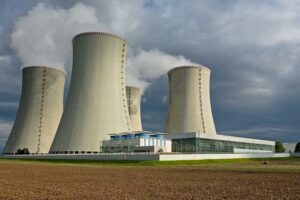By Sheldeen Joy Talavera, Reporter
THE Department of Energy (DoE) plans to begin accepting applications for nuclear energy projects by 2026 as part of efforts to introduce nuclear power into the country’s energy mix by 2032.
“Although there is uncertainty about the availability of the technology, our target basically is that the Philippines will be ready to accept applications for nuclear projects by 2026,” Energy Secretary Sharon S. Garin told reporters on Wednesday.
The Energy chief said this is to allow proponents to prepare ahead of the 2032 target.
Under the Philippine Energy Plan, the country aims to integrate nuclear energy into the power mix with at least 1,200 megawatts (MW) of capacity by 2032, doubling it to 2,400 MW by 2045 and to 4,800 MW by 2050.
To ensure safety in utilizing nuclear energy, the DoE said it has begun discussions on its environmental impact.
The DoE-led Nuclear Energy Program-Inter-Agency Committee (NEP-IAC), through its Subcommittee 5, organized a technical workshop for concerned government agencies to tackle the environmental regulations for nuclear power plant facility projects.
“This undertaking defines the Nuclear Energy Program’s commitment to pursuing the integration of comprehensive environmental safeguards with the Philippines’ peaceful transition into nuclear energy utilization,” DoE Legal Services Director Myra Fiera F. Roa said in a statement on Thursday.
Ms. Roa said the workshop aims to address remaining challenges, enhance tools, and ensure that environmental compliance certificate applications “embody not only our regulatory compliance, but also public trust and scientific integrity.”
On the part of the Department of Environment and Natural Resources, Environmental Management Bureau Director John Edward T. Ang said the agency is committed to ensuring economic sustainability via the environmental impact assessment system.
“While there are perceived benefits to the nuclear route, it is our collective responsibility to ensure that its implementation will be in harmony with the environment and our people,” he said.
Amid growing interest from potential proponents to pursue either conventional nuclear power plants or small modular reactors, the government is coordinating to align applicable environmental regulations for nuclear projects.
“The vision of having nuclear energy is no longer a distant discussion. We are working to put in place a process to ensure that environmental risks are addressed before projects are rolled out. We can make economic progress and maintain the integrity of the environment,” Ms. Roa said.
Meanwhile, Ms. Garin said a feasibility study being carried out by Korea Hydro & Nuclear Power Co. Ltd., along with other South Korean partners KEPCO KPS, a subsidiary of Korea Electric Power Corp., and Doosan Heavy Industries and Construction, for the rehabilitation of the mothballed Bataan Nuclear Power Plant (BNPP) is expected to be completed by February next year.
BNPP, located at Napot Point in Morong, Bataan, was completed in 1985, two years after the original target, according to the Philippine Nuclear Energy Program.
The twin developments of the People Power Revolution and the Chernobyl Accident in 1986 led to the decision to mothball the BNPP.
The National Power Corp., as the designated caretaker of the power plant, placed it into preservation mode.

